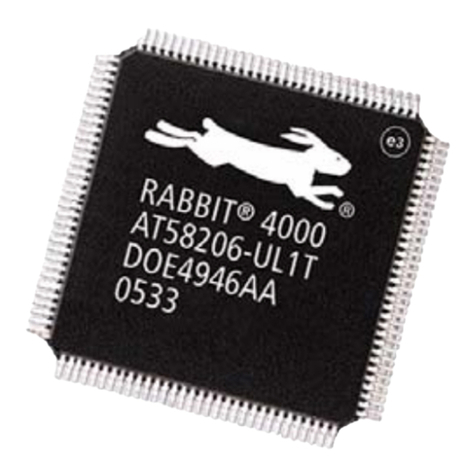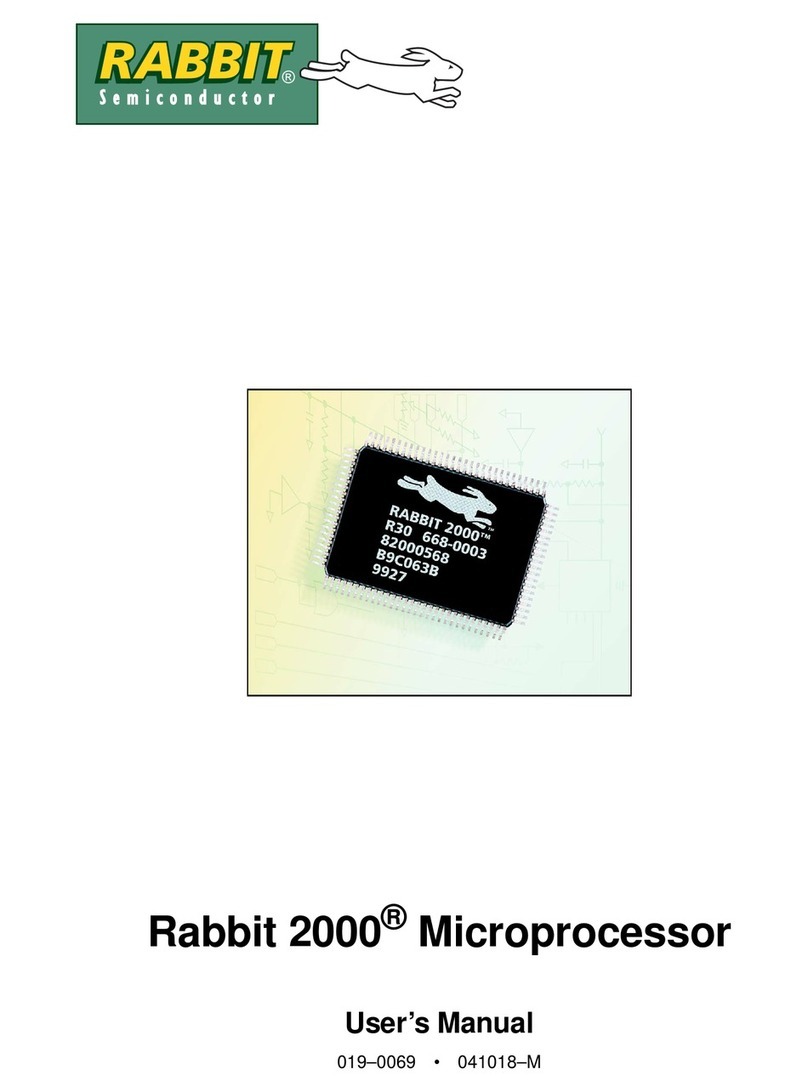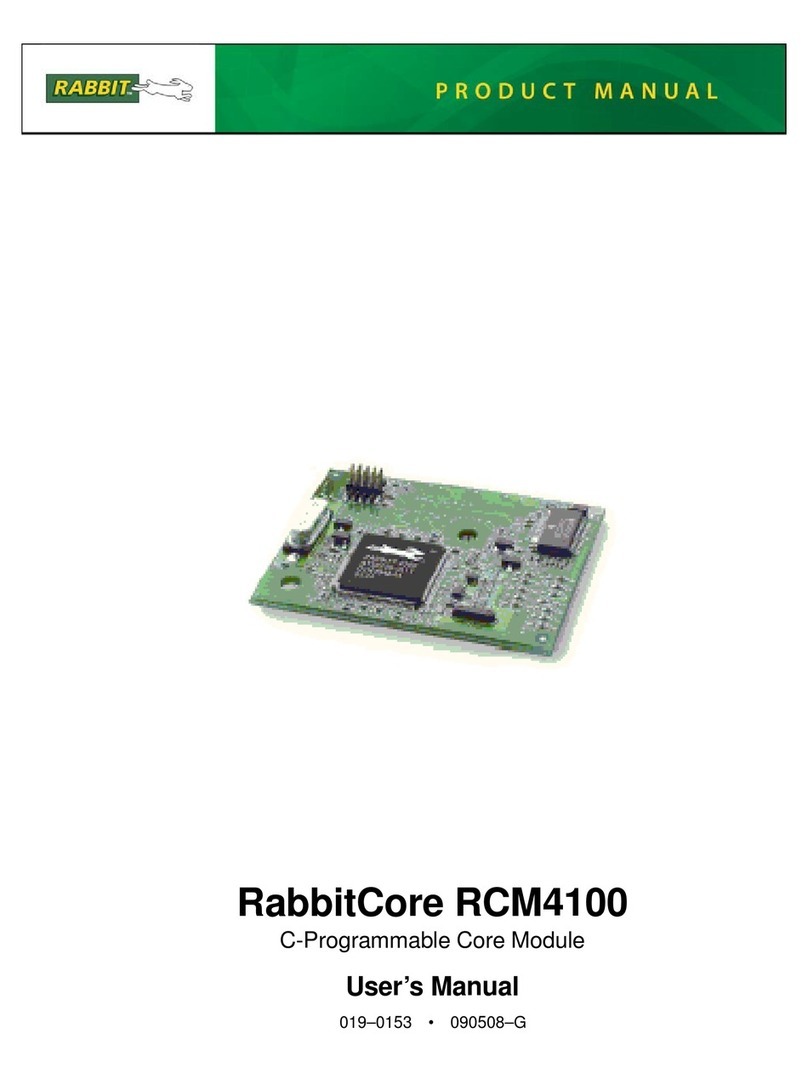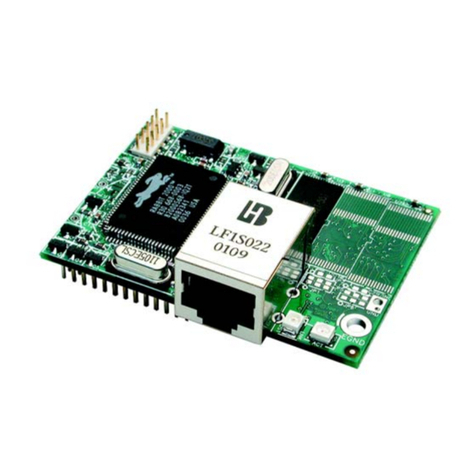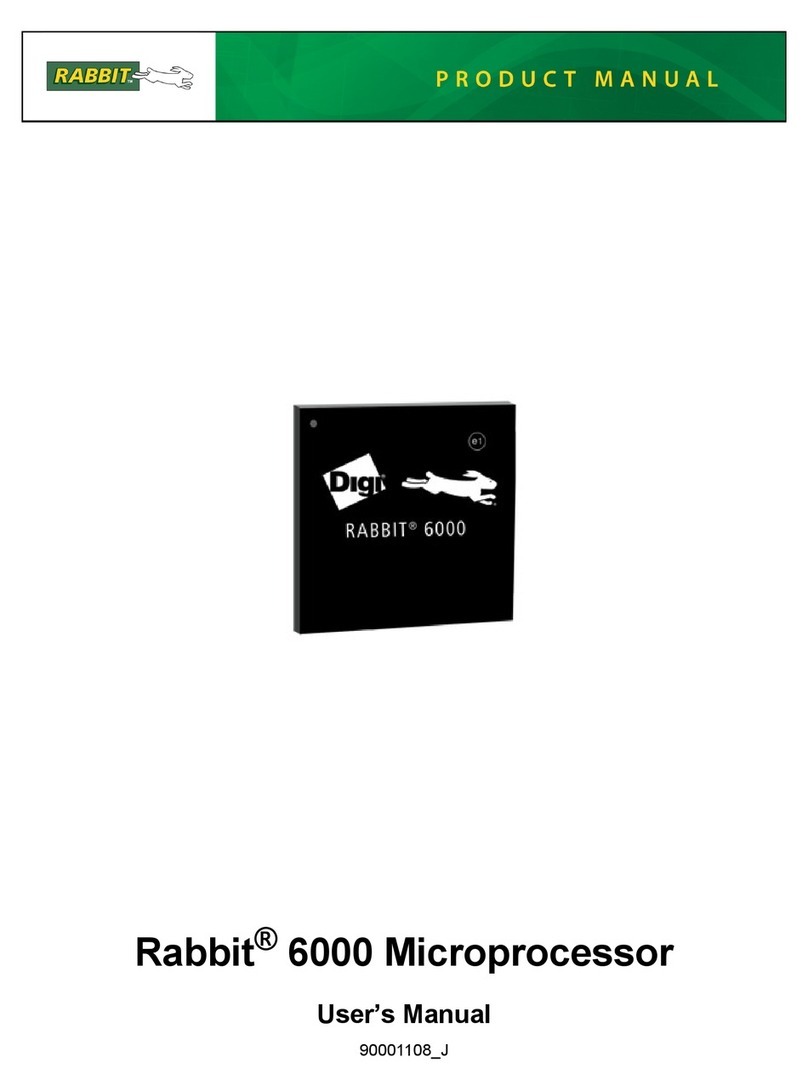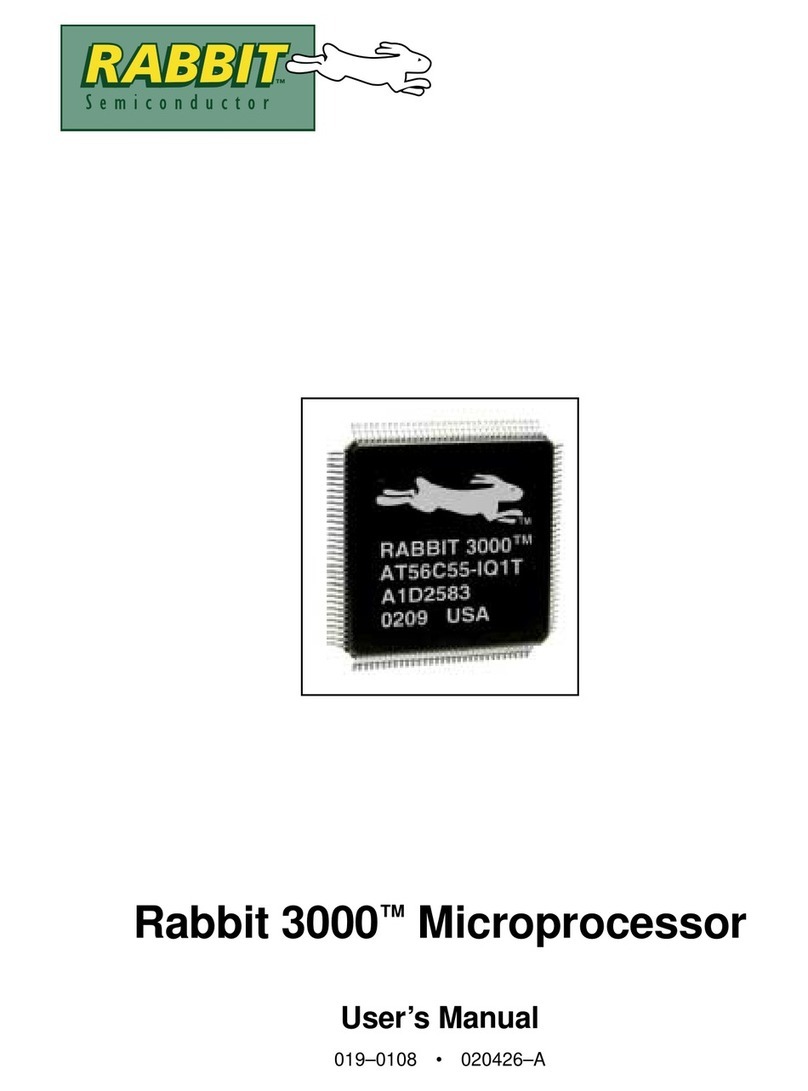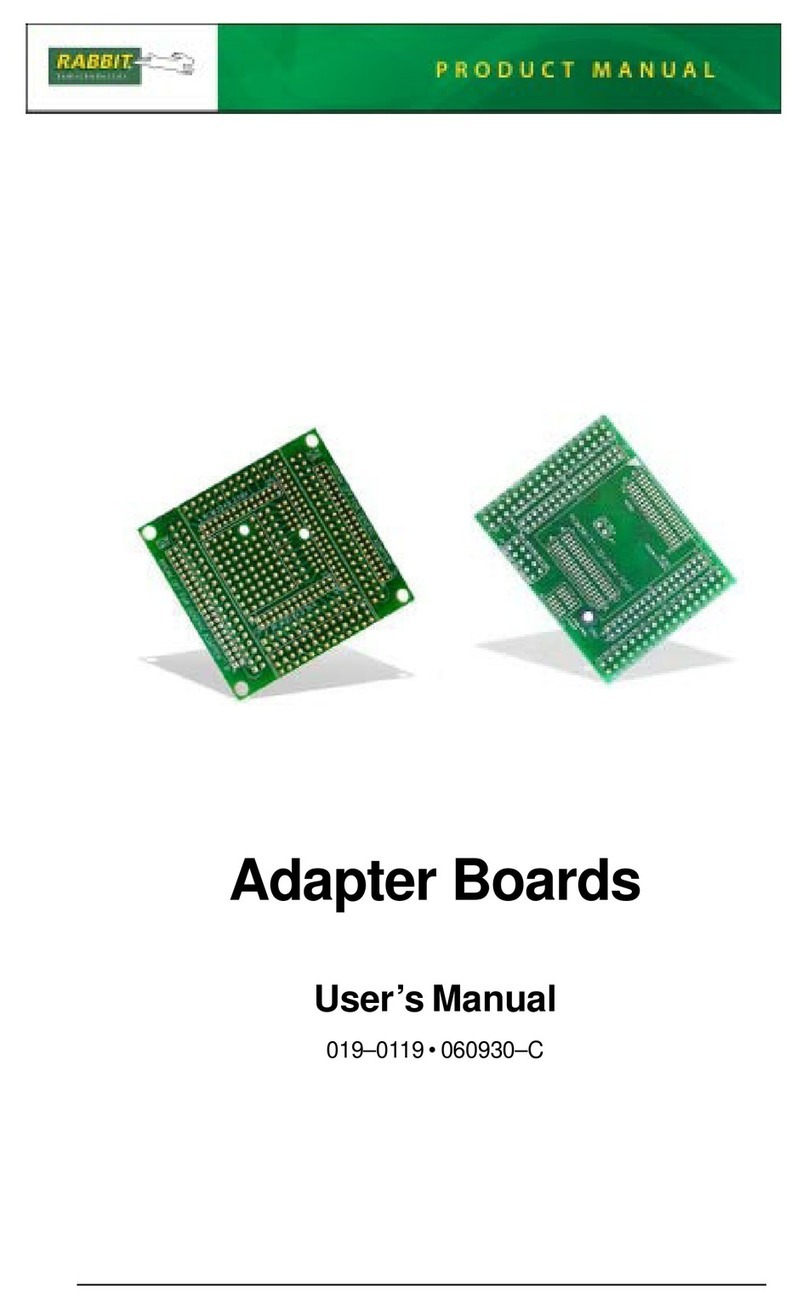Designer’s
Handbook
1.
Introduction.....................................................................................................................1
2.
Hardware
Design
Overview............................................................................................3
3.
How
Dynamic
C
Cold-Boots
the
Target
System............................................................5
3.1
How
the
Cold
Boot
Mode
Works
In
Detail.................................................................................5
3.2
Program
Loading
Process
Overview...........................................................................................6
3.3
Program
Loading
Process
Details ...............................................................................................6
4.
Dynamic
C
Rabbit
Programming
Overview...................................................................9
4.1
Memory
Organization ...............................................................................................................10
4.2
How
The
Compiler
Compiles
to
Memory.................................................................................14
5.
The
Rabbit
BIOS ..........................................................................................................17
5.1
Startup
Conditions
Set
Up
By
the
BIOS...................................................................................17
5.2
BIOS
Flowchart.........................................................................................................................18
5.3
Internally
defined
macros..........................................................................................................19
5.4
Modifying
the
BIOS..................................................................................................................19
5.5
Origin
Directives
to
the
Compiler.............................................................................................20
6.
The
System
ID
Block....................................................................................................23
6.1
Definition ..................................................................................................................................23
6.2
Access........................................................................................................................................24
6.3
Reading
the
ID
block.................................................................................................................24
7.
BIOS
Support
for
Program
Cloning .............................................................................27
8.
Low-Power
Design
and
Support...................................................................................29
8.1
Software
Support
for
Low-Power
Sleepy
Modes .....................................................................31
8.2
Baud
Rates
in
Sleepy
Mode......................................................................................................32
9.
Memory
Planning .........................................................................................................33
10.
Flash
Memories...........................................................................................................35
10.1
Writing
Your
Own
Flash
Driver..............................................................................................36
11.
Hardware
Bring-Up
Procedure ...................................................................................39
11.1
Bringing
up
a
New
Rabbit
System..........................................................................................39
11.2
Initial
Checks...........................................................................................................................39
11.3
Diagnostic
Test
#2...................................................................................................................39
11.4
Diagnostic
Test
#3...................................................................................................................40
Legal
Notice.....................................................................................................................41
